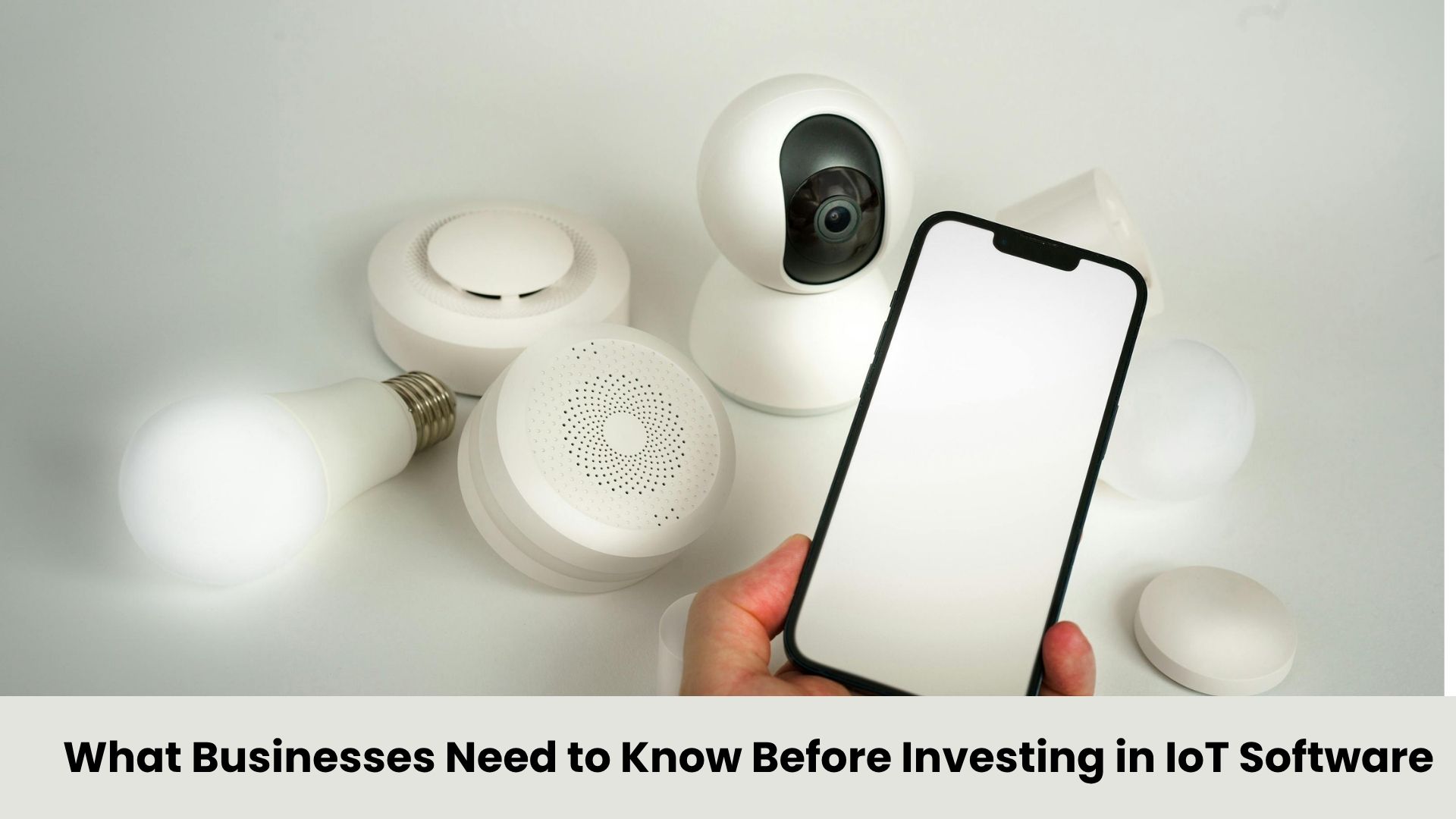By 2025, the number of connected IoT devices is projected to reach over 27 billion, according to IoT Analytics. From predictive maintenance in manufacturing to real-time tracking in logistics, IoT is transforming industries with data-driven intelligence. But jumping into IoT without a clear plan can lead to costly setbacks. If your business is considering investing in IoT software, you need more than just hardware—you need a well-thought-out digital strategy. This blog covers what you must know before building or buying IoT software and how to make sure your investment pays off.
Understanding IoT in the Business Landscape
The Internet of Things (IoT) refers to the network of physical devices—machines, vehicles, appliances, sensors—that are embedded with software and connectivity to collect and exchange data. In business, IoT enables automation, monitoring, and decision-making based on real-time insights.
Industries leveraging IoT include:
- Manufacturing: Predictive maintenance, smart factories
- Healthcare: Remote patient monitoring, medical device integration
- Retail: Smart inventory, connected stores
- Agriculture: Soil monitoring, irrigation control
- Logistics: Fleet tracking, cold chain monitoring
But with great potential comes complexity. IoT software development demands a mix of embedded systems, cloud integration, analytics, security, and user interface design—requiring deep technical expertise.
Key Considerations Before Investing in IoT Software
1. Clearly Define Your Use Case
Not every connected device adds value. The best IoT strategies start with a clearly defined business problem. Ask:
- What process are we trying to optimize or automate?
- What metrics will define success?
- How will we collect, store, and analyze the data?
Whether you’re tracking energy usage or monitoring equipment status, the goal must be business-focused, not just tech-driven.
2. Prioritize Data Security from the Start
With more endpoints, IoT increases your attack surface. Each connected sensor or device becomes a potential vulnerability. Make sure your IoT software includes:
- Secure device authentication
- Encrypted data transmission
- Role-based access controls
- Compliance with local data laws (e.g., PIPEDA in Canada, GDPR in Europe)
Security should be built into your architecture, not patched in later.
3. Think Scalability and Flexibility
IoT solutions aren’t static—they grow with your business. Your system should support:
- Adding more devices over time
- Handling large volumes of data
- Integration with existing platforms (ERP, CRM, etc.)
A modular, cloud-native architecture helps ensure that your IoT ecosystem can scale without rebuilding from scratch.
4. Connectivity and Infrastructure Requirements
Your IoT software is only as good as its connectivity. Before investing:
- Assess your connectivity options (Wi-Fi, LTE, 5G, LoRaWAN)
- Consider redundancy plans for outages
- Ensure edge devices can function offline when needed
In remote environments (e.g., oilfields or farms), offline-first design can be crucial.
5. Choose the Right Development Partner
Building IoT software is rarely a solo effort. Most businesses need a strategic technology partner to deliver robust, secure, and scalable systems. If you’re in North America, partnering with a custom software development company in Canada can offer the benefits of localized support, strong tech expertise, and compliance with Canadian data protection standards—all while staying in a nearby time zone.
6. Plan for Maintenance and Long-Term Support
IoT software isn’t a “set it and forget it” investment. Devices require firmware updates, APIs change, and security threats evolve. Make sure your development team includes a long-term maintenance plan—whether through in-house staff or external contracts.
7. Integrate Analytics from Day One
The real power of IoT lies in the insights it generates. From energy savings to improved safety, your platform should turn raw data into real-time dashboards, alerts, and historical reports. Consider:
- Custom KPIs and reporting tools
- Predictive models powered by machine learning
- API access to feed insights into business systems
Analytics should be embedded—not bolted on.
Real-World Example: Logistics Optimization with IoT
A Canadian logistics firm integrated IoT sensors into its delivery fleet to monitor fuel consumption, engine health, and driver behavior. With a custom-built dashboard, the company:
- Reduced fuel costs by 15%
- Decreased maintenance downtime by 30%
- Improved delivery predictability and customer satisfaction
This transformation was only possible through software built specifically around the company’s needs—not a one-size-fits-all product.
Red Flags to Avoid When Investing in IoT Software
- Relying solely on hardware vendors with limited software expertise
- Ignoring compliance or security protocols
- Overcomplicating the MVP
- Choosing platforms that don’t support future integrations
- Failing to involve end users (operations, IT, customers) in early design stages
These common pitfalls can delay ROI and cause project failure.
Conclusion
IoT offers a powerful pathway to smarter, more efficient business operations—but only if approached with clarity and purpose. By defining clear goals, ensuring security and scalability, and partnering with the right development team, businesses can turn connected devices into a competitive advantage. If you’re planning to enter the IoT space, take the time to build not just technology—but a strategic foundation for long-term growth.
FAQs
1. What industries benefit most from IoT software?
Industries like manufacturing, logistics, healthcare, energy, and agriculture benefit the most due to the need for monitoring, automation, and real-time insights.
2. How much does it cost to develop custom IoT software?
Costs vary widely based on complexity, number of devices, and features. A simple prototype may start around $30,000, while enterprise-scale solutions can exceed $200,000.
3. Is it better to buy off-the-shelf IoT software or build custom?
Off-the-shelf tools are fast and cheap but may not fit your operations perfectly. Custom solutions provide better integration, scalability, and long-term ROI—especially for complex needs.
4. What’s the typical timeline to launch an IoT platform?
A basic IoT MVP may take 3–6 months. Larger systems involving multiple integrations, dashboards, and analytics could take 9–12 months or more.
5. Can small businesses afford IoT software development?
Yes, especially with modular development and cloud infrastructure. Many SMBs start with a focused MVP and scale over time as ROI becomes clear.






